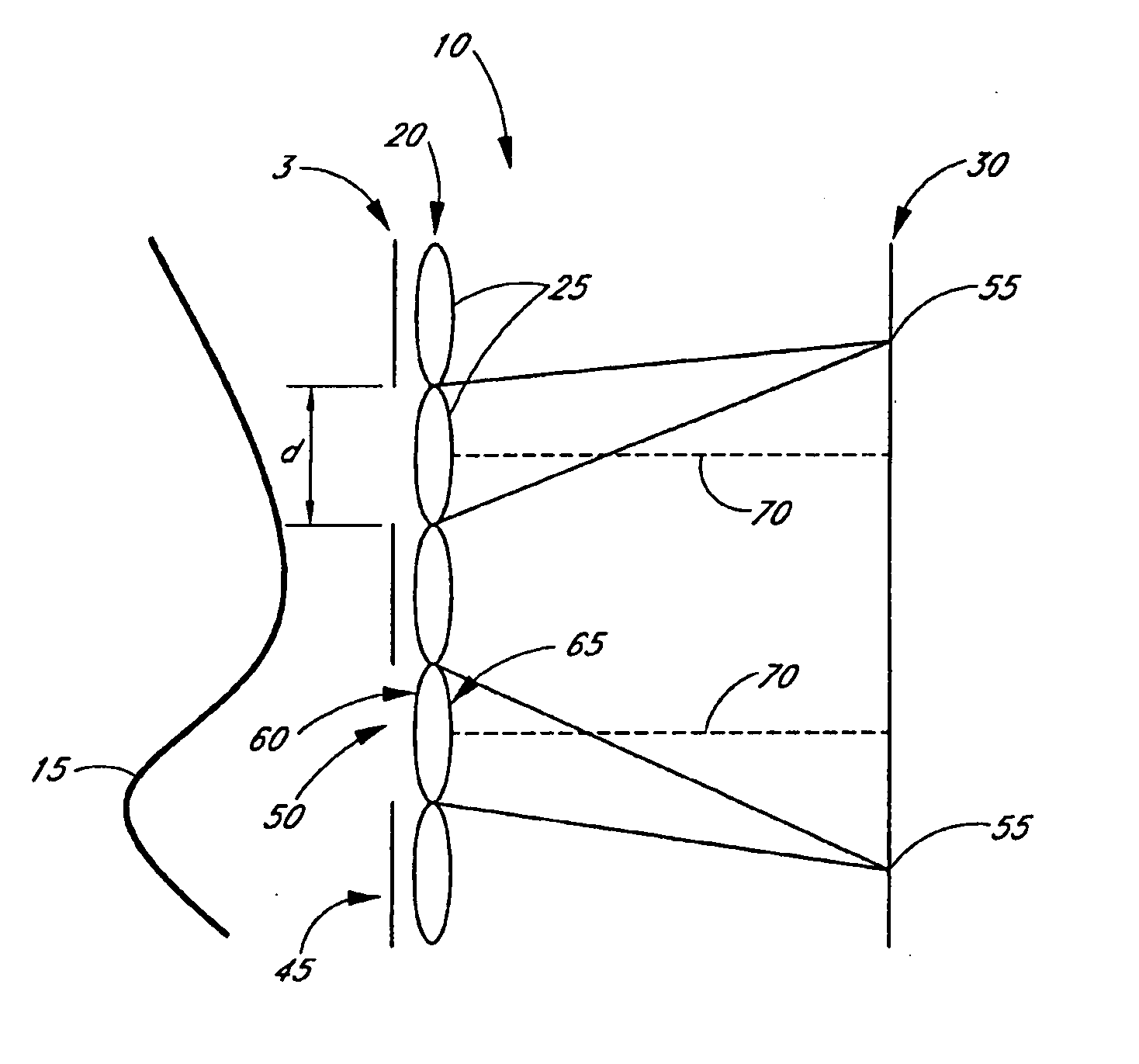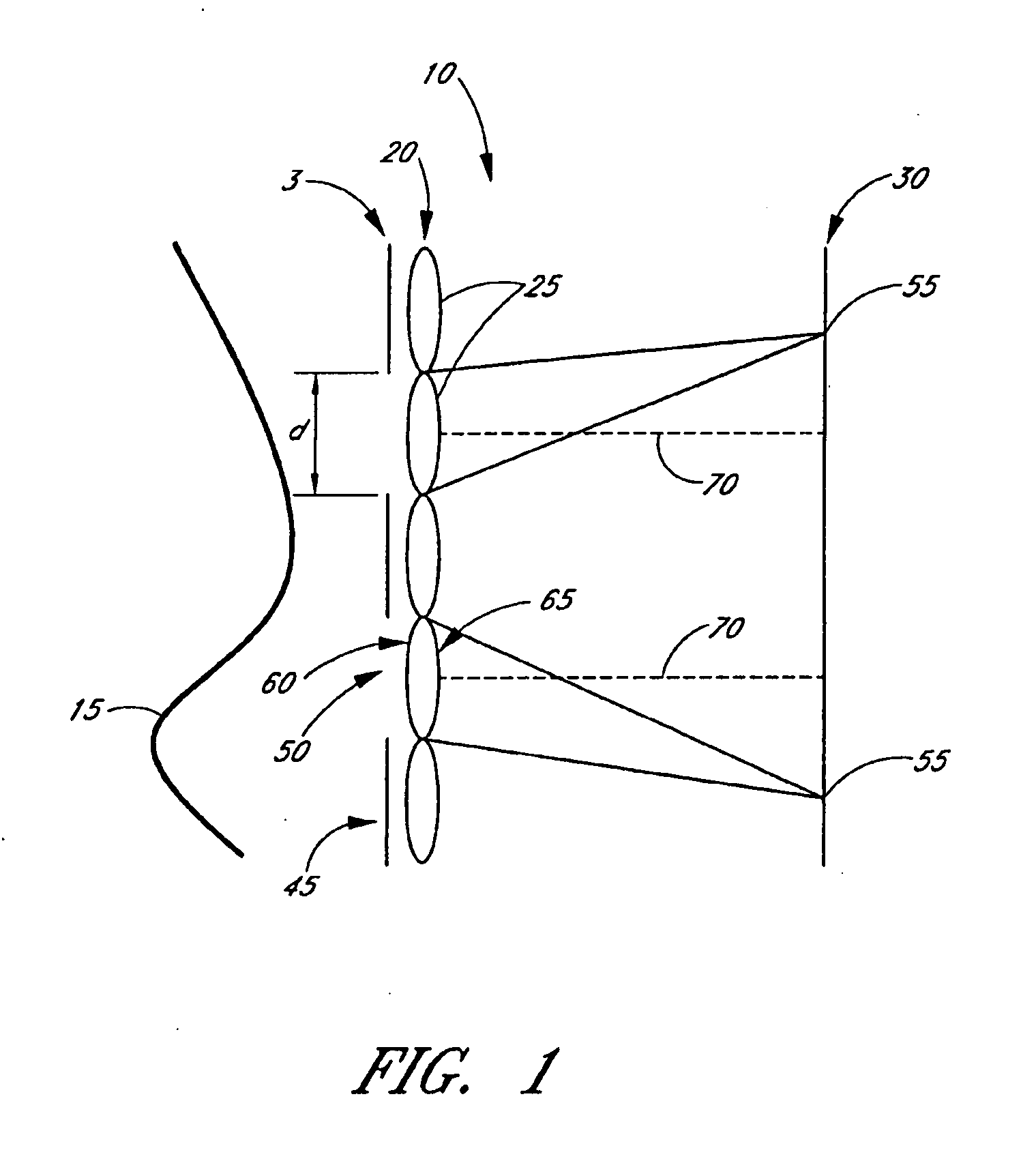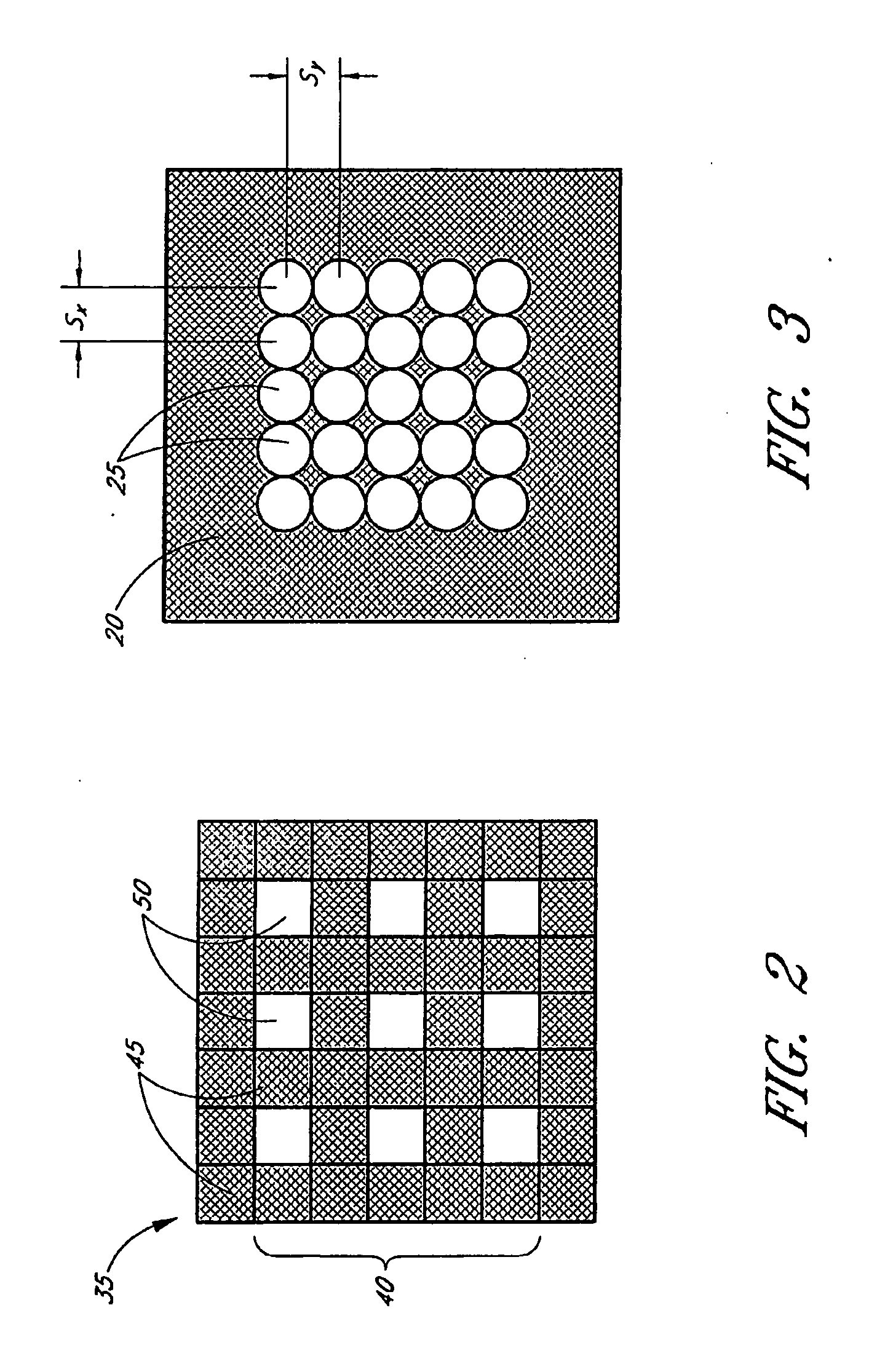Large dynamic range Shack-Hartmann wavefront sensor
a wavefront sensor, large-dynamic technology, applied in the direction of measurement devices, instruments, optical radiation measurement, etc., can solve the problems of indeterminate focus of the second lenslet, proportionate decrease of the sensitivity of the wavefront sensor, and (1) or (2), so as to increase the dynamic range of increase the shack-hartmann wavefront sensor
- Summary
- Abstract
- Description
- Claims
- Application Information
AI Technical Summary
Benefits of technology
Problems solved by technology
Method used
Image
Examples
Embodiment Construction
[0036] These and other embodiments of the present disclosure will also become readily apparent to those skilled in the art from the following detailed description of preferred embodiments having reference to the attached figures; however, the disclosure is not limited to any particular embodiment(s) disclosed herein. Accordingly, the scope of the present disclosure is intended to be defined only by reference to the appended claims.
Wavefront Sensor
[0037]FIGS. 1, 2, and 3 schematically illustrate a wavefront sensor 10 for measuring a wavefront 15. The wavefront sensor 10 comprises an array 20 of lenslets 25, a detector array 30, and a mask 35 having a temporally fixed pattern 40 containing one or more opaque regions 45 that are substantially opaque to light from the wavefront 15 and one or more transmissive regions 50 that are transmissive of light from the wavefront 15. The mask 35 and the array 20 of lenslets 25 are disposed such that light from the wavefront 15 that is transmitt...
PUM
| Property | Measurement | Unit |
|---|---|---|
| diameter | aaaaa | aaaaa |
| diameter | aaaaa | aaaaa |
| diameters | aaaaa | aaaaa |
Abstract
Description
Claims
Application Information
 Login to View More
Login to View More - R&D
- Intellectual Property
- Life Sciences
- Materials
- Tech Scout
- Unparalleled Data Quality
- Higher Quality Content
- 60% Fewer Hallucinations
Browse by: Latest US Patents, China's latest patents, Technical Efficacy Thesaurus, Application Domain, Technology Topic, Popular Technical Reports.
© 2025 PatSnap. All rights reserved.Legal|Privacy policy|Modern Slavery Act Transparency Statement|Sitemap|About US| Contact US: help@patsnap.com



